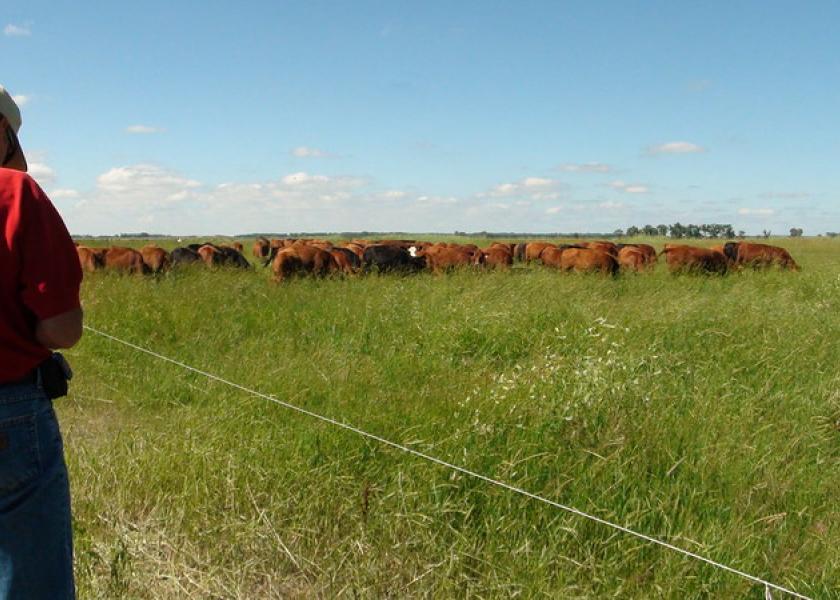Mob Grazing Debunked: Is it the ‘Golden Ticket’ to Grazing Efficiency and Soil Health?

As the amount of available grazing lands continue to decrease, while the population and demand for beef continues to rise, ranchers face the question: How do we produce more with less?
The idea of ‘mob grazing’ has been around since the 1980s, as a way to increase stocking density while increasing nutrient cycling as cattle trample standing plants and ultimately yield healthier soils and biodiversity.
This practice includes cycling dense herds through multiple pastures a day, then giving pastures extra time to recover, with the idea that this intense grazing would increase soil health and livestock production.
However, a recently concluded, eight-year study by the University of Nebraska-Lincoln (UNL), found alternate information.
The study included three cattle groups, 36 steers rotating twice per day through a total of 120 sub-irrigated pastures in the Nebraska Sandhills over a 60-day grazing period, nine steers on a four-pasture rotation system with one grazing cycle of 15 days per paddock (4PR1) over a 60-day grazing period and 10 steers on a four-pasture rotation system with two grazing cycles of 10 days per paddock (4PR2) over an 80-day grazing period.
Researchers Bianca Andrade, Walter Schacht and colleagues found that mob grazing led to the trampling of nearly 50% of the standing plants, and twice that of the conventional four-pasture rotations, yet the researchers found no meaningful difference in the subsequent production, composition or root growth of pasture plants, a UNL article says.
The team concluded that the benefits of trampling are, if anything, limited. Additionally, the added labor of mob grazing might far outweigh the benefits, for many operations.
Other results from the study include:
• Ground cover measured as ‘litter’ was consistently above 90% on all three treatments.
• The frequency of occurrence of native and exotic species did not vary in response to grazing treatments; however, it did vary in response to year (wet versus dry).
• The proportion of perennial versus annual species was not affected by any of the factors evaluated.
• Harvest efficiency was greater for 4PR1 (58.8%) than mob (45.3%) and 4PR2 (51.6%).
• By the end of the experiment, the percentage of crude protein was on average 2.2 percentage units greater in 4PR2 pastures than in 4PR1 or mob pastures.
• Average daily gain of steers in the 4PR2 pastures was greater than steers in the mob pastures in all years and greater than steers in the 4PR1 pastures in all years except for 2014.
Researchers suggest, “Ranchers might consider initiating mob grazing earlier in the growing season— when plants are leafier and more likely to be eaten—and introducing a second grazing cycle in the summer,” the article explains.







